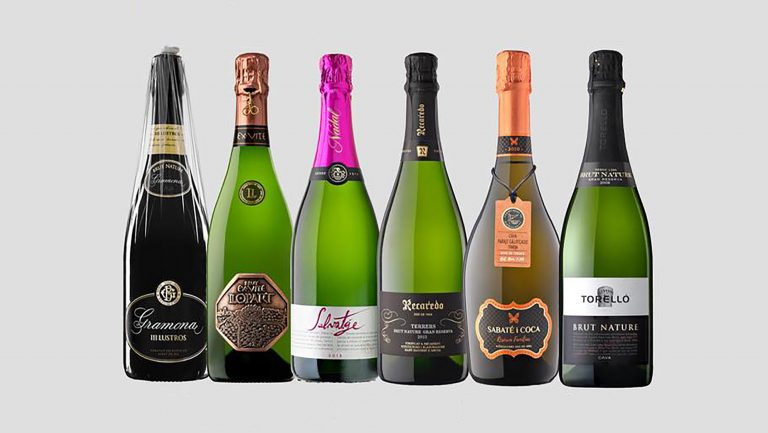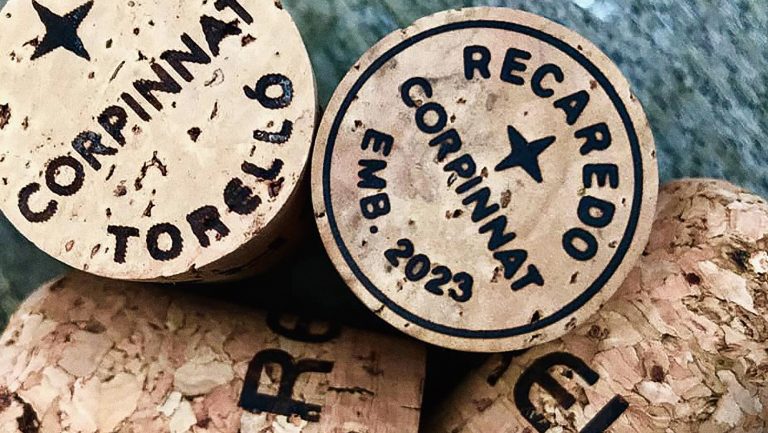A new category of sparkling wine—Corpinnat—is emerging in Spain, spearheaded by a number of small producers who’ve broken ties with the Cava DO. Created in 1972, the Cava DO produces some 250 million bottles of sparkling wine a year. The majority of that production is concentrated among three companies: Freixenet, Codorníu, and García Carrión.
Over the last decade, several attempts have been made by smaller Cava producers to distinguish themselves from larger-volume productions and to elevate the category. As a response to these calls for differentiation, in 2017 the Cava Regulatory Board created a new category for single-estate sparkling wines: Cava Paraje Calificado (CPC). The more rigorous selection process is focused on a vineyard designation, lower yield, and a longer aging period.
This category, however, permits both large and small Cava producers to participate, and no requirements are placed over the entirety of a winery’s production—only on the wine to be qualified as CPC.

Don’t miss the latest drinks industry news and insights. Sign up for our award-winning newsletters and get insider intel, resources, and trends delivered to your inbox every week.
The Association of Wine Producers and Growers Corpinnat, formed in 2015 and ratified by the EU in late 2017, is a sparkling-wine association that takes into account the entire production of a producer rather than just individual wines. The name Corpinnat is formed by the combination of two Spanish words and means “heart of Penedès.”
Corpinnat producers must make wines from 100 percent organic, sustainable vineyards that have been harvested by hand. The wines must be made within the Corpinnat territory, entirely vinified on their winery premises, aged for a minimum of 18 months, and they must contain a minimum of 90 percent indigenous grapes. These regulations effectively rule out the largest Cava producers from participating in the association and labeling their wines Corpinnat.
There are nine Corpinnat producers to date: Gramona, Sabaté i Coca, Mas Candí, Ilopart, Torelló, Nadal, Can Feixes, Recaredo, and Julia Bernet. Each producer formally left the Cava DO last month, and they will now only bottle their wines as Corpinnat. “All of the Corpinnat companies are no longer part of the Cava DO, as the Regulatory Board considered both brands incompatible on the same label,” explains Ton Mata, the president of the Corpinnat association and the director of Recaredo. “For this reason, we decided to follow our own path and will no longer use the [labels] Cava, Paraje Calificado, or Gran Reserva.”

Of the 12 wines approved as CPC in 2017, 5 will now no longer be considered CPC but instead be labeled Corpinnat.
“More than just a category,” Mata says, “Corpinnat is the name of a sparkling wine made in a very special way and from a special place—from the Corazón del Penedès.” Here, the first sparkling wines in the traditional method were made in the Iberian Peninsula almost 150 years ago. I believe Corpinnat will become a reference within the greatest sparkling wines of the world.”
Importers of these fine sparkling wines from Spain are so far unperturbed by the change. “If you know the Huguet family you know that this has not been a precipitous move,” says Stephen Metzler, the president of Classical Wines, which has been importing fine Spanish wines to the U.S. since 1984 and imports Corpinnat producer Can Feixes. “Years, if not generations, of experience stand behind this ultimate recourse. From the commercial standpoint, Huguet Brut Nature is a late-disgorged world-class bubbly with a minimum of 80 months en tirage, and its appeal and its markets have always stemmed from direct product knowledge of those who have been privileged to taste it. In our marketing, we will lose ‘Cava’ and ‘Gran Reserva’ but we will gain Corpinnat.”
This is not the first time renowned Cava producers have left the DO. In 2012, Raventós—a sparkling-wine producer with a cult following—left the DO; it remains one of Spain’s most sought-after sparkling wine producers.

Although the defection of some producers from the Cava DO will likely have little impact on Cava’s mass appeal, it may affect perception at the top end. “The perception of Cava as a more affordable sparkling option than Champagne will probably remain the same commercially but will take a hit in the industry, since it now loses some of the most respected and unique producers from Penedès,” says Yamil Melendez, the general manager of the Michelin-starred Spanish restaurant Casa Mono in New York City and its next-door sister venue, Bar Jamón. He stocks a dozen sparkling wines from the region, including a couple that are now outside the Cava DO.

Getting to Know Cava’s New Category
Spain’s budget-friendly designation gets a luxury upgrade with super-premium sparklers
“We do find it challenging to relay the message of what quality Cava is,” says Melendez. “Consumers have the thought of Cava as the cheap version of Champagne served at weddings—and getting them out of that mind-set is difficult.” He tries to dispel this notion by offering Cavas and other Spanish sparkling wines that he and his staff “really like and respect.” They seek out terroir-driven bottles that showcase the talents of their winemakers. “Our selection process will probably remain the same,” he says, “but we will for sure look to have more wines from Corpinnat, since the requirements for the wines meet the style of wine we tend to like for our list. The change I see going forward might be a larger list of sparkling wines.”
The first releases of Corpinnat will reach the market this spring. Besides the label “Corpinnat,” producers can include “DO Penedès” on the label.

Dispatch
Sign up for our award-winning newsletter
Don’t miss the latest drinks industry news and insights—delivered to your inbox every week.
Amanda Barnes is a British wine writer who since 2009 has been based in South America, where she specializes in the wines and regions of Argentina, Chile, Brazil, and Uruguay and writes the South America Wine Guide. Ever footloose, she is currently on a mission to travel Around the World in 80 Harvests.






